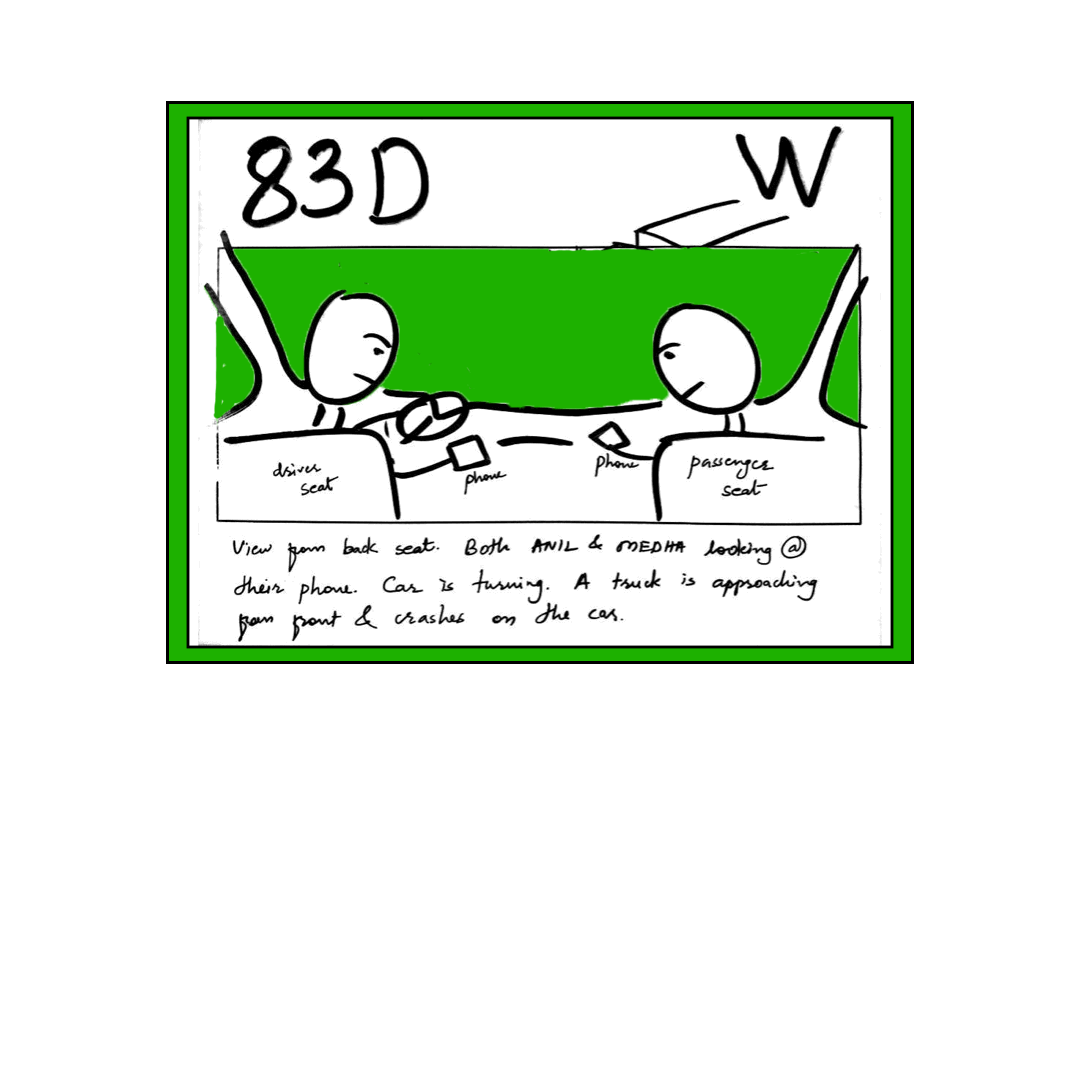3 Seconds to Leadership
SPOILERS AHEAD
One of the things that pulled me into digital filmmaking is the possibility of showing anything you can imagine on the screen. The “digital” nature of filmmaking has truly democratized it. A modest setup of a computer and the right piece of software can achieve wonders for digital film.
Just filming a scene with a digital camera is one thing, but adding special effects to the footage to create an illusion can be a daunting task for complex and wild imaginations. Digital video effects are achieved by layering video elements on top of each other. Simple way to understand it is that it is a game of pixels. While creating an effect, some pixels are replaced with others, some are changed in their values, some are overlapped and some are removed.
In a recent feature film I made, I had an accident scene written in the screenplay. We did not have a huge budget to actually stage an accident, let alone having stunt coordinators on the set and film it. But only through amazing teamwork and gathering the right people to do the job made it happen.
Here is how the scene looks in the final film. Please note that the images can be disturbing. It is a scene where a car collides head on with a truck.
This was my initial sketch that started it all. The shot number was 83D, and W means wide shot.
To explain what we are looking at, the camera is inside the car on the backseat, looking towards the windshield. We see the truck coming towards the car from the windshield. The car needs to enter the opposite traffic at an intersection, and at the left turn, the truck would collide with the car.
Let’s look at what’s happening in this shot in the top view.
The truck has a green light. The car has yellow. The car is turning left, and the driver and the passenger are not looking ahead, they are busy on their phones. Therefore, the car enters the opposite traffic, and meets with an accident.
Now for obvious reasons, we cannot actually make the accident happen and film it. The easiest way to film this without the real life accident, is to film the action in front of a green screen. Then, since it is digitally shot, you just replace the green pixels with a shot of a truck approaching towards the car, and you would have the shot.
Let’s break it down. We have to shoot the scene from the inside the car, with the driver actually at the wheel and the car moving on the road. However, there will be a green screen in front of the car so the driver cannot look at the road through the windshield. It is blocked by the green screen. That means, we need to separate the moving action of the car from the driving action of the driver. In other words, we want the car moving, but we don’t want it to be driven.
How do you move a car without driving it?
You haul it!
Here is a model I created for this assembly.
The 1.5V battery is there to show the scale of the prototype.
Now it's time to get real. To make this a reality, I needed to get the following folks together.
Rig builder = Person who will construct this rig
Cinematographer = Person who will shoot the scene - Cinematographer
VFX artist = Person who will add the truck digitally in post production - VFX artist
Director = Person who will direct the actors and approve the final shot - Director (that’s me!)
To realize the final shot, there were a lot of complex decisions that needed to be made. Just to have some idea, some of them are,
Which car to use? The car needed to fit two actors in the front seats, and the crew (cinematographer, sound recordist and the director) in the back seat, with their equipment. Plus this car has to match all the other shots in the film to have continuity. (coordination between director, cinematographer and actors)
How far would the nose of the car be from the green screen? Depending on the camera that’s getting used and the focal length of the lens, we would understand how much of the windshield is in the frame, and that would decide how big of a green screen we need. (coordination between cinematographer and rig builder)
The actors have to react to the shot as if they are getting hit by the truck. So we needed to understand what movement a head-on collision would cause on the driver and the passenger. (coordination between VFX artist, director and actors)
When a shot is getting filmed, we film several takes of one shot to later pick the best one out of them in the final edit. That means, we needed space to drive the assembly with continuous turns so we can film a take for each turn (remember the final shot in the film is a car turn) (coordination between director, cinematographer, rig builder and rig driver)
This is how the rig looked when it showed up on the set. Can you see how similar it was to the prototype? Amazing isn’t it?
The final shot lasts 3 seconds in the film. Three!!! Can you imagine? Three!! That’s it! Working on these 3 seconds made me an effective leader unlike anything else I had encountered until then.
Things that I learned,
You need to know what you want.
You have to build a team of “right” people for the job.
You need to be able to explain the vision to everyone involved.
You need to understand the dependencies.
You need to have crystal clear communication within the team.
Do you have any such experiences where you grew as a leader? Would love to know your thoughts.







